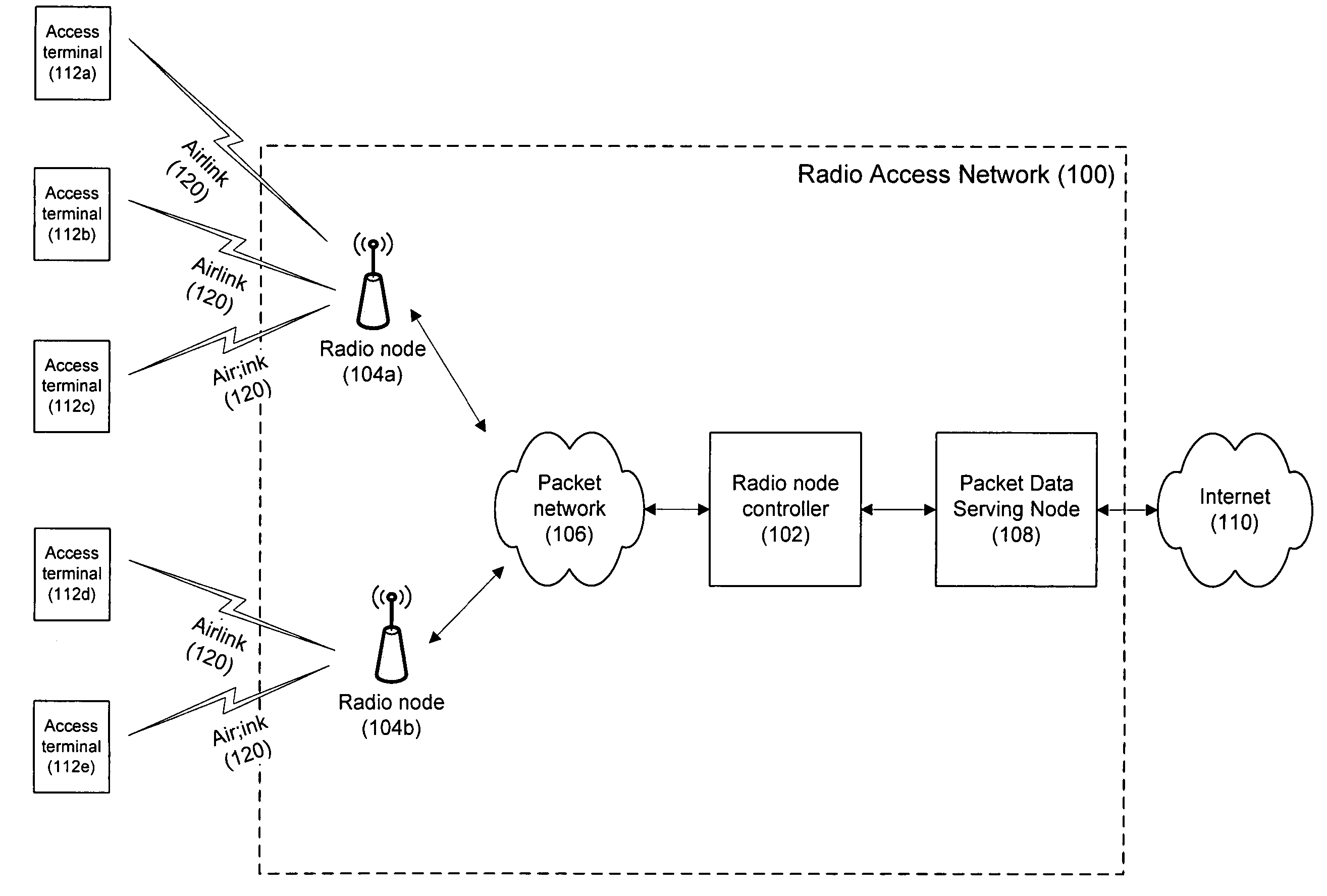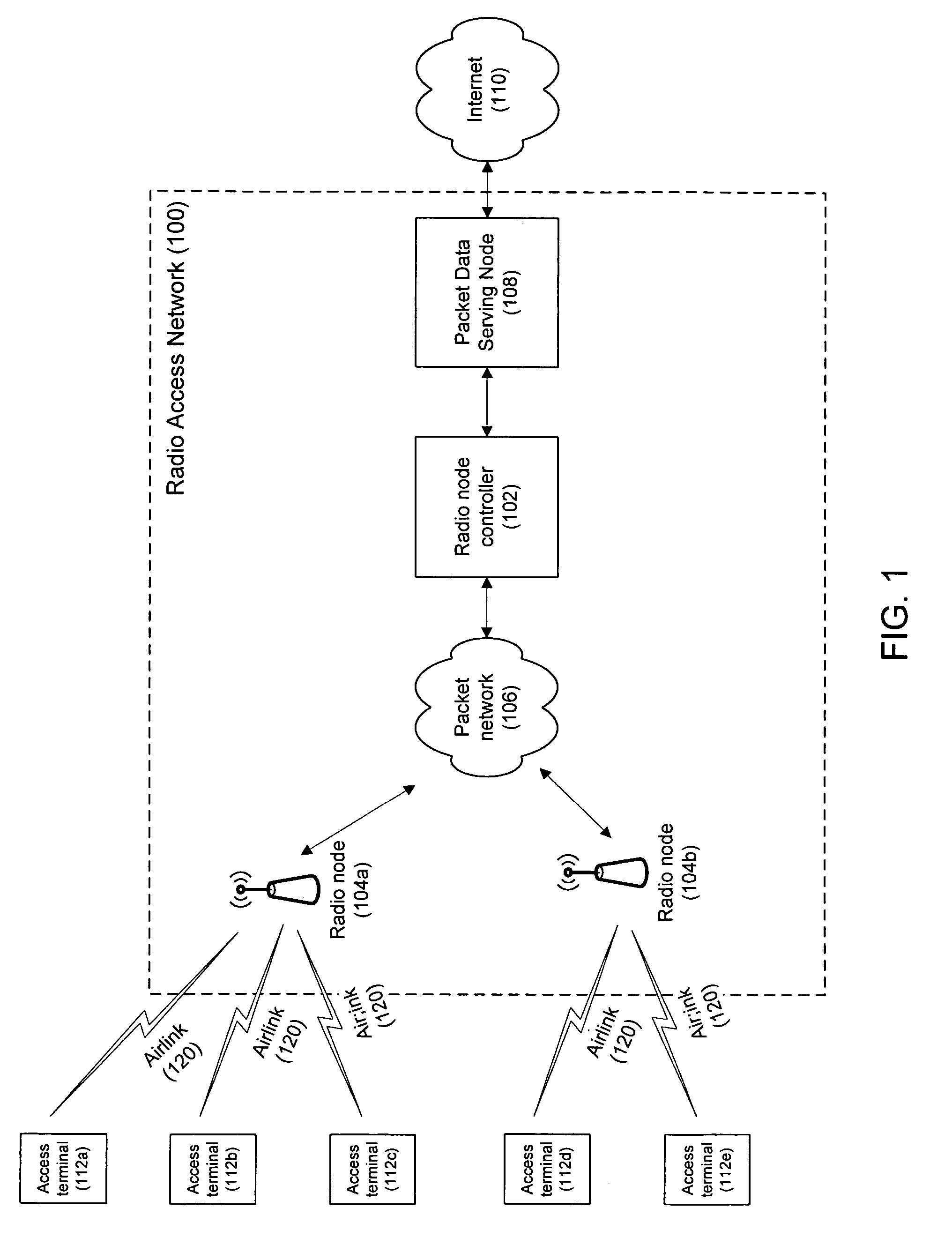Resource allocation in a radio access network
a radio access network and resource allocation technology, applied in the field of resource allocation in the radio access network, can solve the problems of low resource utilization, request is denied, connection attempts made by rev. 0 access terminals,
- Summary
- Abstract
- Description
- Claims
- Application Information
AI Technical Summary
Benefits of technology
Problems solved by technology
Method used
Image
Examples
Embodiment Construction
[0021]FIG. 1 shows a 1xEV-DO, Rev. A radio access network 100 with a radio node controller 102 connected to two radio nodes 104a, 104b over a packet network 106. The packet network 106 can be implemented as an IP-based network that supports many-to-many connectivity between the radio nodes 104a, 104b and the radio node controller 102. The radio node controller 102 is connected to the Internet 110 via a packet data serving node 108. Other radio nodes, radio node controllers, and packet networks (not shown in FIG. 1) can be included in the radio access network 100.
[0022]Network resources are allocated to access terminals 112a-112f in order to enable the access terminals 112a-112f to communicate with the radio access network 100. Although there are several different types of network resources that are needed to establish a connection between each access terminal and the radio access network 100, the example techniques described below refer to a connection resource in a sector. The tech...
PUM
 Login to View More
Login to View More Abstract
Description
Claims
Application Information
 Login to View More
Login to View More - R&D
- Intellectual Property
- Life Sciences
- Materials
- Tech Scout
- Unparalleled Data Quality
- Higher Quality Content
- 60% Fewer Hallucinations
Browse by: Latest US Patents, China's latest patents, Technical Efficacy Thesaurus, Application Domain, Technology Topic, Popular Technical Reports.
© 2025 PatSnap. All rights reserved.Legal|Privacy policy|Modern Slavery Act Transparency Statement|Sitemap|About US| Contact US: help@patsnap.com



